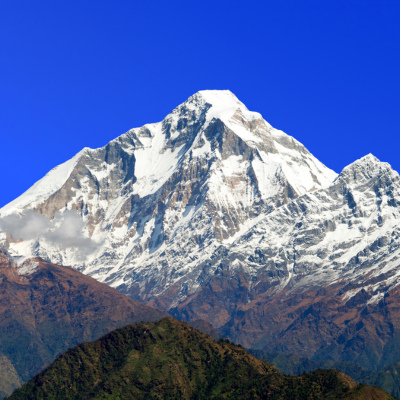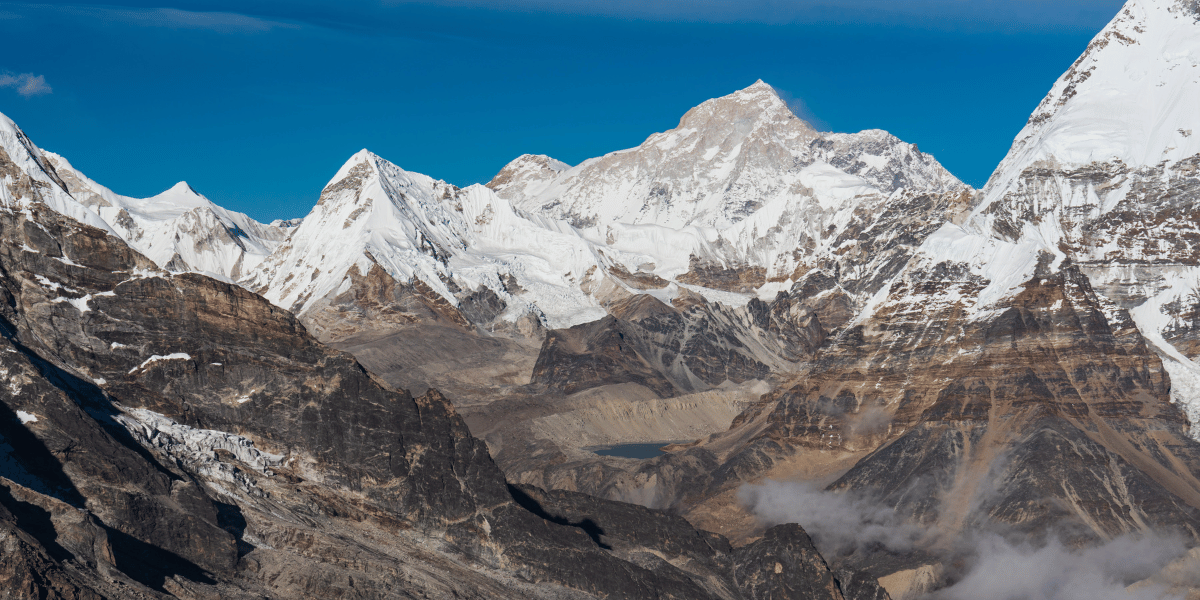The Makalu Base Camp Trek is a hidden gem that remains relatively unknown to many. However, it is undoubtedly one of the most captivating and fascinating treks in the eastern part of Nepal. The Makalu Barun National Park, nestled in the Sankhuwasabha district, offers a breathtaking journey through serene landscapes. From rivers and forests to terraced fields and towering mountains, this destination is a true paradise for nature enthusiasts. The 17 days of Makalu Base Camp offer an incredible journey through captivating trekking trails, filled with vibrant life and unforgettable experiences amidst the breathtaking mountains. During the trek, you will encounter a fascinating culture and breathtaking scenery that will leave you in awe. The region is well-known for its pristine and untamed nature, showcasing a wide array of unique flora and fauna. The Makalu Base Camp trek offers a multitude of surprising and exhilarating challenges each day. This trek provides a unique opportunity to immerse yourself in the beauty of nature and experience its unfiltered essence.
This trek is a remarkable journey in the eastern region of Nepal, leading you to the base camp of Mt. Makalu. This majestic mountain stands tall at an elevation of 8,485 metres, making it the world's fifth-highest peak. During the trip, you will come across numerous attractions, both natural and historical. While exploring the city, you'll have the opportunity to visit historical sites that provide a fascinating glimpse into the country's rich history and vibrant culture. Additionally, during your trek, you'll have the chance to closely observe Nepal's diverse and unique biodiversity. Here are some of the major highlights of the trip:
Kathmandu City
Kathmandu, the capital of the country, is known as the "city of temples" due to its numerous religious sites. This location showcases a unique combination of timeless charm and contemporary progress. Kathmandu is a bustling city filled with hidden gems and intriguing discoveries at every turn. From the lively local markets to the charming historical sites and modern high-rise apartments, there's always something to captivate your senses. There are numerous ancient landmarks scattered all over the city that are hundreds of years old and are now listed as UNESCO World Heritage Sites. You will explore these sites during your sightseeing programme. Below are some of the landmarks you will visit.
Kathmandu Durbar Square, located in the heart of a bustling city, is home to numerous ancient temples and awe-inspiring architectural wonders. It is one of many Durbar Squares present in Nepal. The historical sites showcase an array of religious architecture and other remarkable landmarks that highlight the exquisite art and craftsmanship of the Nepalese people. Next is Swayambhunath, also known as the ‘Monkey Temple', a religious site situated atop a small hill within the Kathmandu valley. This pilgrimage landmark is dedicated to promoting religious harmony between two different religions, Buddhism and Hinduism. Set atop a hill, this location offers a breathtaking panoramic view of Kathmandu city and the majestic mountain peaks on clear days. Another notable site is the Pashupatinath Temple, a significant religious landmark devoted to the Hindu deity Shiva. This Hindu pilgrimage holds great reverence and is widely regarded as one of the most significant. The temple was constructed during the Malla era, showcasing the timeless beauty of Pagoda style architecture. Within the pilgrimage area, one can find a multitude of religious structures, statues, and ancient temples that showcase unique styles and artistic expressions from the past. Lastly, there is the Boudhanath Stupa, a truly remarkable religious site that holds great significance in Buddhism. This stupa is truly remarkable, both in its immense size and its profound spiritual significance. The stupa is one of the largest in the world, featuring a pristine white exterior and a stunning pinnacle at its apex. The stupa is adorned with vibrant prayer flags, symbolising a universal message of peace.
Makalu Barun National Park
The Makalu Base Camp is situated within the breathtaking Makalu Barun National Park, one of the twelve incredible national parks in Nepal. It is located at the foot of Makalu in the Sankhuwasabha district of Nepal. The entire valley is located within the boundaries of Makalu Barun National Park. The park offers a breathtaking display of contrasts. Here, majestic waterfalls flow into a dramatic gorge, rugged rocks emerge from the vibrant green forest, and vibrant wildflowers blossom against the backdrop of snow-capped peaks. The landscape is a haven for some of the few remaining untouched mountain ecosystems on the planet. Inside the valley, you will have the opportunity to witness and appreciate some of the most stunning natural splendour. The valley undergoes a remarkable transformation with each passing season, transitioning from a vibrant green landscape to a stunningly serene winter scene. The beauty of this place is truly diverse.
Throughout the trail, you will come across some truly remarkable villages and settlements that provide an incredible trekking experience. These small villages are situated in stunning locations, offering you a breathtaking view and a peaceful ambience that is truly unparalleled. The region is home to the Gurung, Rai, Sherpa, and Shingsawa (Bhotia) communities, each with its own unique cultural traditions that you can fully experience during the trek. You will come across villages such as Num Bazaar, Tashi Gaun, and others during your trek, where you will get to see a beautiful blend of culture and tradition with nature all along. It is truly an amazing experience.
Makalu Base Camp
Mount Makalu is a remarkable sight, standing tall with its unique four-sided pyramid shape at an impressive elevation of 8,485m. Makalu is renowned for its formidable reputation as one of the most challenging eight-thousanders, making it one of the most demanding mountains to conquer. The mountain is famous for its challenging slopes and narrow ridges. The Makalu Base Camp is located at an elevation of 5100m, at the base of the world's fifth highest mountain. The vantage point of the mountain offers a breathtaking panoramic view of the surrounding area. The base camp offers an incredible vantage point of some of the world's highest mountains, such as Mt. Everest (8,848m), Chamlang (7,319m), Lhotse (8,516m), Baruntse (7,129m), and many other snow-capped peaks. The jaw-dropping view of the Himalayas, combined with the mesmerising glacier lake and charming alleyways, leaves everyone in awe. The basecamp offers a unique opportunity to observe the mountains from various vantage points, allowing you to witness numerous staggering peaks.
What to expect?
The Makalu Base Camp Trek is a hidden gem in Nepal that remains relatively undiscovered. Despite its lack of popularity, it is definitely one of the finest treks you can go on. The 17-day trek is an amazing and captivating journey of cultural and natural exploration. Before starting your walking journey, it is recommended to stay in Kathmandu for trek preparation. While you are in Kathmandu, you can visit and explore some of the stunning ancient landmarks that are listed in the UNESCO World Heritage Sites. Throughout the sightseeing programme, you'll develop a profound appreciation for the country's culture, history, and art style. Once you've finished sightseeing, your journey will begin with a domestic flight to Tumlingtar. From there, a short off-road drive will take you to Num Bazzar, where you'll start your trek towards the Makalu Base Camp.
Once you arrive in Num, you'll be greeted by breathtaking landscapes and a charming rural atmosphere. Once you spend a night at Num, your trek will begin. As you enter Makalu Barun National Park, you will gradually witness the captivating landscape and the mesmerising beauty of nature. The trekking trail is quite adventurous, with numerous steep ascents and descents that make the walk quite challenging. However, you will be rewarded with magnificent views of the stunning nature throughout the journey. During your walking journey, you will encounter numerous hills, valleys, waterfalls, and pristine small lakes. The surrounding forests will provide constant entertainment along the way. You will be staying in local teahouses, as there are not many lodging facilities in this region due to its remoteness. However, you will find quite comfortable places to stay and enjoy the local culture and ambience. The trails are mostly well-marked and easy to navigate, with abundant wildlife to observe along the way. Take a moment to appreciate the natural beauty that surrounds you. The trek involves traversing steep and small passes, including the challenging Sipton La Pass. While it can be tiring, the effort is rewarded by the stunning scenery along the way. You'll be surrounded by incredible panoramas of the valley and a diverse array of plant and animal life that you may come across during your trek.
Once you arrive at Makalu Base Camp, you will see the breathtaking sight of majestic mountains that seem to touch the sky. The view of the glacier and the surrounding landscape is simply stunning. From the base camp, you will get to see the fifth world’s highest mountains - Makalu, along with other lofty mountains such as Mt. Everest (8,848m), Chamlang (7,319m), Lhotse (8,516m), Baruntse (7,129m), and many other snow-capped peaks. The view from here is truly outstanding, allowing you to witness the majestic sight of the mountains up close and personal. After exploring the base camp, you will retrace your steps and make your way back to Kathmandu. Throughout your journey, it's not just about reaching the destination, it's also about the experiences along the way. During this trek, you will have the opportunity to immerse yourself in the awe-inspiring nature and untamed beauty that surround you. This is the major highlight of the trek, in addition to the phenomenal view of the mountains. This trek offers a unique opportunity to immerse yourself in a rich cultural experience, allowing you to fully appreciate the local traditions and natural beauty. It is a less frequented route, allowing you to freely explore and savour each day of the trek without external distractions.
The Makalu Base Camp Trek is a great choice for those seeking less crowded trekking trails and a closer connection with nature. This trek is ideal for those seeking to escape the crowds and immerse themselves in local culture, disconnecting from fast-paced city life. This trek occurs within the Makalu Barun National Park, renowned for its abundant natural beauty. Here, nature reigns supreme, allowing visitors to immerse themselves in the untamed and pristine splendour of the surroundings. The entire trek is truly remarkable. However, the most captivating aspect of the trek is its trail. You will traverse deep gorges, walk alongside rivers, and ascend steep hills, all while being surrounded by beautiful scenery and a serene atmosphere. This combination of elements makes your journey truly one-of-a-kind and awe-inspiring. If you're looking to explore the diverse natural and cultural aspects of Nepal and have an adventurous experience in raw nature, this trek is ideal for you. Embark on an unforgettable adventure through the majestic Himalayas, where time stands still and nature guides you every step of the way.


 Adventure
Adventure
 Couple
Couple
 Family
Family
 Luxury
Luxury
 Motorbike
Motorbike
 Photography
Photography
 Wildlife
Wildlife
 Yoga
Yoga
 Annapurna
Annapurna
 Langtang
Langtang
 Dolpo
Dolpo
 Eastern Nepal
Eastern Nepal
 Everest
Everest
 Manaslu
Manaslu
 Western Nepal
Western Nepal





